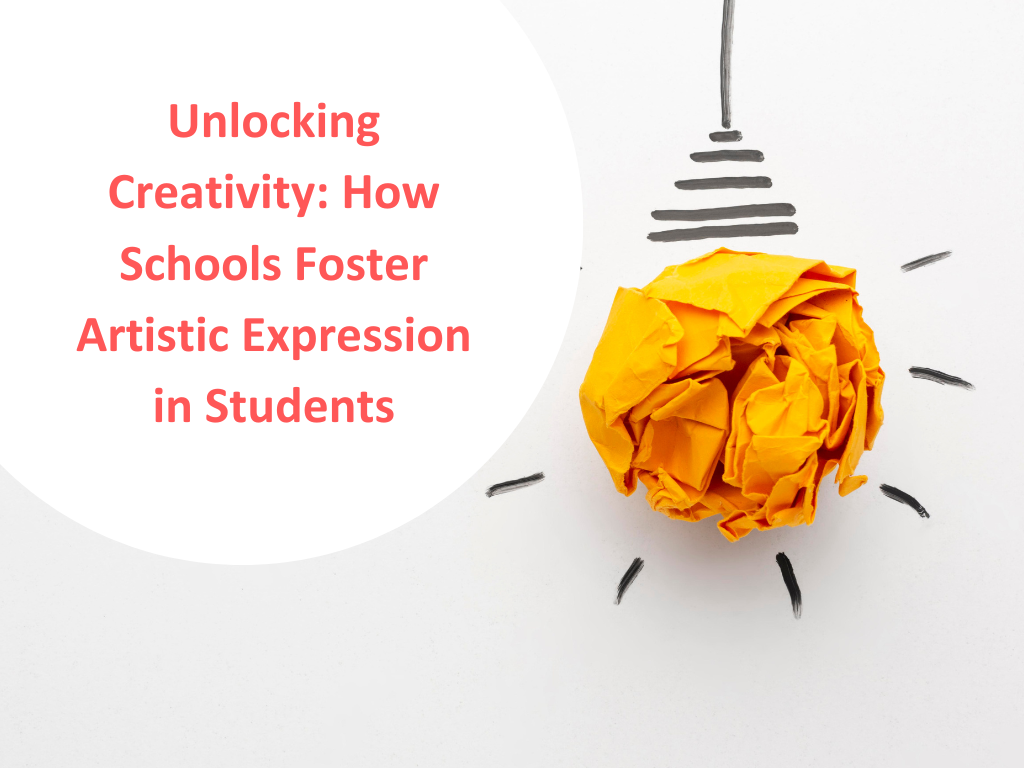Introduction:
In the pursuit of providing a well-rounded education, schools play a vital role in nurturing creativity and artistic expression in students. Creativity is a powerful force that fuels innovation, problem-solving, and emotional intelligence. We at K.R. Mangalam Global School, GK-I believes that when schools foster artistic expression, they empower students to think critically, communicate effectively, and explore their unique identities. This article delves into the various ways in which schools unlock creativity and inspire students to embrace their artistic potential.
- Understanding Creativity in Education:
Before exploring how schools foster artistic expression, it is crucial to grasp the concept of creativity in education. Creativity goes beyond traditional arts; it encompasses imaginative thinking, originality, and the ability to approach challenges from unique perspectives. By nurturing creativity, schools equip students with essential skills for success in an ever-changing world.
- Integrating Arts into the Curriculum:
One of the primary ways schools unlock creativity is by integrating arts into the curriculum. Whether through visual arts, music, dance, drama, or creative writing, exposing students to diverse art forms allows them to explore different means of expression and discover their passions.
- Dedicated Art Programs and Facilities:
Schools that prioritize artistic expression often offer dedicated art programs and state-of-the-art facilities. These include well-equipped art studios, music rooms with various instruments, dance studios, and theatre spaces. Such resources create a conducive environment for students to experiment and develop their artistic skills.
- Embracing Multidisciplinary Approaches:
Creative expression flourishes when students can make connections across different disciplines. Schools that embrace multidisciplinary approaches enable students to explore intersections between art and science, art and technology, and art and social issues, fostering innovative thinking.
- Encouraging Creative Thinking in All Subjects:
Unlocking creativity in schools involves promoting creative thinking in all subjects, not just the arts. Teachers can incorporate problem-solving activities, brainstorming sessions, and open-ended projects across disciplines, encouraging students to think outside the box.
- Celebrating Diversity in Artistic Expression:
Each student has unique talents and ways of expressing themselves artistically. Schools that celebrate diversity in artistic expression create inclusive spaces where students feel empowered to showcase their creativity in various forms.
- Engaging Guest Artists and Workshops:
Inviting guest artists and organizing workshops provide students with exposure to professionals in the creative fields. Interacting with artists, writers, musicians, and performers can inspire students and offer insights into potential career paths.
- Creative Competitions and Showcases:
Schools can organize creative competitions and showcases to motivate students to excel in their artistic pursuits. These events offer opportunities for students to share their work with a broader audience and receive recognition for their talents.
- Emphasizing Process Over Outcome:
Fostering artistic expression requires an emphasis on the creative process rather than solely focusing on the final product. Schools that encourage experimentation, reflection, and growth support students in their artistic journey.
- Integrating Technology and Digital Arts:
In the digital age, technology plays a significant role in artistic expression. Schools that integrate technology and digital arts into their curriculum enable students to explore digital mediums and innovative techniques.
- Supporting Extracurricular Arts Activities:
Beyond formal curriculum, schools can encourage extracurricular arts activities such as art clubs, drama productions, dance troupes, and music bands. These activities provide additional avenues for students to immerse themselves in the arts.
- Partnering with Local Arts Organizations:
Collaborating with local arts organizations, museums, galleries, and theatres enhances students’ exposure to the broader arts community. Such partnerships provide opportunities for students to participate in exhibitions and performances.
- Artistic Expression as a Tool for Emotional Wellness:
Artistic expression serves as a powerful tool for emotional wellness. Schools that recognize this aspect prioritize art therapy and use creative activities to help students process emotions and build resilience.
- Fostering a Supportive Artistic Community:
Creating a supportive artistic community within the school fosters collaboration, peer learning, and mutual encouragement among students. This community can also extend to involve teachers, parents, and alumni.
- Measuring the Impact of Artistic Expression:
To assess the effectiveness of fostering artistic expression, schools can measure its impact on student development, academic performance, and overall well-being. This data can inform future initiatives and demonstrate the value of art in education.
Conclusion:
Unlocking creativity and fostering artistic expression in students are integral to a holistic education that prepares them for the challenges of the future. Schools play a crucial role in providing the right environment, resources, and opportunities for students to explore their artistic potential. We at K.R. Mangalam Global School, GK-I, one of the top 5 IB schools in Delhi believe that by embracing the arts in various forms and encouraging creative thinking across disciplines, schools empower students to become innovative thinkers, confident communicators, and well-rounded individuals. As we continue to recognize the significance of creativity in education, schools must prioritize and celebrate artistic expression as a fundamental aspect of the learning journey.
